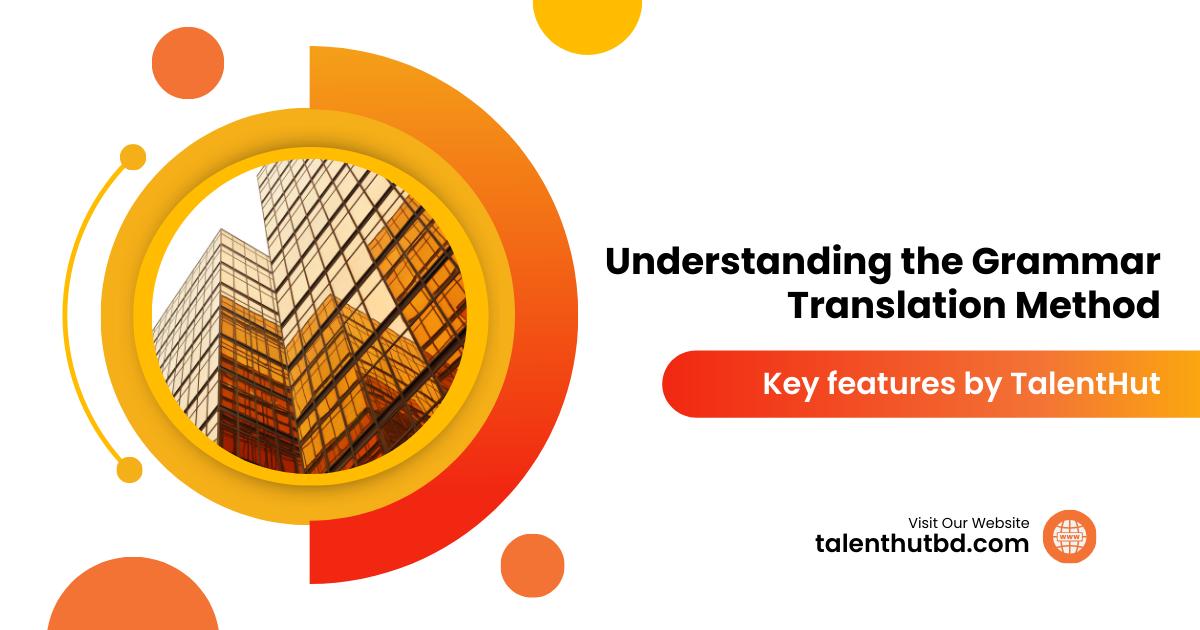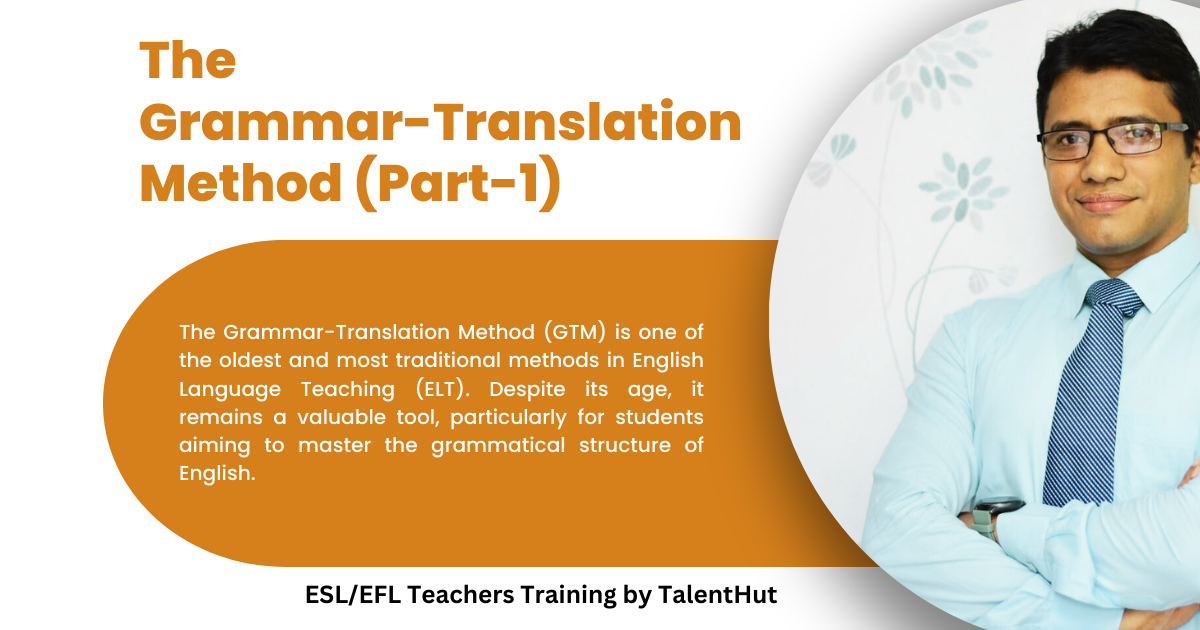The Grammar-Translation Method (GTM) in ELT: Teaching English to Foreign Students
Introduction to Grammar-Translation Method (GTM)
The Grammar-Translation Method (GTM) is one of the oldest and most traditional methods in English Language Teaching (ELT). Despite its age, it remains a valuable tool, particularly for students aiming to master the grammatical structure of English. In this article, we will explore the principles of GTM, its applications in modern classrooms, and how platforms like talenthut, talenthutbd, and other ESL/ELT programs can leverage this method to teach English effectively to foreign students.
Understanding the Grammar-Translation Method

Overview: The Grammar-Translation Method focuses on teaching grammar rules and vocabulary through direct translation between the target language and the native language. It emphasizes reading and writing skills over speaking and listening, making it ideal for academic and formal language learning.
Key Features:
– Emphasis on grammatical rules and their application.
– Focus on translating texts from the target language to the native language and vice versa.
– Vocabulary is taught in the form of isolated word lists.
– Reading and writing are prioritized over speaking and listening.
Practical Applications of GTM
1. Structured Grammar Lessons
Practical Application: At talenthutbd, ESL/ELT courses can be structured around detailed grammar lessons where rules are explained in the students’ native language, followed by examples and exercises in English. For instance, a lesson on verb tenses can start with an explanation in Bengali (Bangla) and proceed with translating sentences from Bengali to English and vice versa. This method ensures that students grasp the grammatical concepts thoroughly before applying them.
2. Translation Exercises
Practical Application: Translation exercises can be an effective tool for students preparing for standardized tests like IELTS. Talenthutielts can incorporate regular translation tasks where students translate complex texts from English to their native language and back. This practice helps in enhancing their understanding of syntax, grammar, and vocabulary. For example, translating a newspaper article or an academic essay can improve both their comprehension and writing skills.
3. Vocabulary Building
Practical Application: Vocabulary lists are a staple of GTM. Talenthut can create extensive vocabulary lists tailored to different proficiency levels. These lists can be used in conjunction with translation exercises. For instance, beginners can start with basic nouns and verbs, while advanced learners can tackle academic and technical terms. Regular quizzes and tests on these lists can reinforce learning.
4. Reading Comprehension
Practical Application: Reading comprehension exercises are crucial in GTM. Talenthutbd can design courses where students read passages in English and answer questions in their native language, or vice versa. This method can be particularly effective for IELTS reading preparation, where understanding and analyzing texts are essential skills. Teachers can use texts from various genres, including literature, science, and history, to diversify learning and keep students engaged.
5. Writing Practice
Practical Application: Writing practice in GTM involves translating ideas from the native language to English, which helps in developing coherent and grammatically correct essays. Talenthutielts can offer writing workshops where students translate their thoughts and ideas into well-structured English essays. For example, students can be given a topic to write about in their native language first and then translate it into English, focusing on maintaining the original meaning and correct grammatical structures.
6. Test Preparation with GTM
Practical Application: GTM is particularly beneficial for test preparation. Talenthutielts can create mock tests that incorporate translation, grammar, and vocabulary exercises. For instance, students can practice with past IELTS papers, translating instructions and questions into their native language to ensure full understanding before attempting the answers in English. This method not only improves their test-taking skills but also boosts their confidence.
Conclusion
The Grammar-Translation Method remains a vital part of ELT, offering a solid foundation in grammar and vocabulary. When used effectively, it can greatly enhance a student’s reading, writing, and comprehension skills. Platforms like talenthut and talenthutbd can leverage GTM to provide structured, effective English learning experiences, tailored to the needs of foreign students. By combining traditional methods with modern technology and resources, they can ensure a comprehensive and robust education that prepares students for both academic success and real-world communication.
For more blogs:


[…] The Grammar-Translation Method (GTM) […]